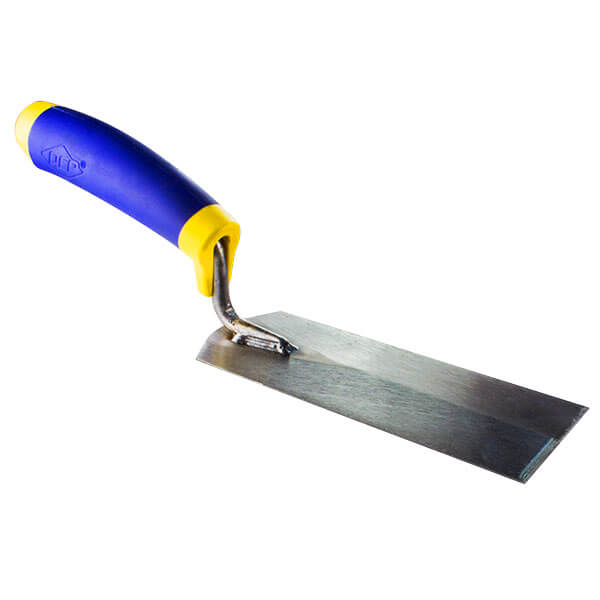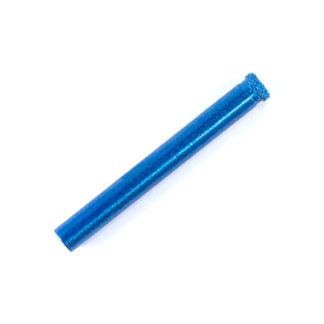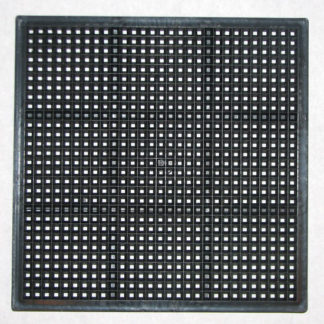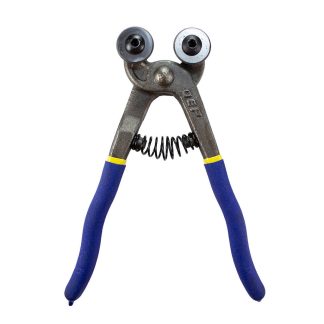Description
The margin trowel has a 5 1/2 inch x 2 inch blade for mixing and spreading grout and thinset. Note that this isn’t a notched trowel of the type typically used for spreading adhesive over large areas for architectural projects. Instead, this trowel was selected for its small size and its shape, which makes it suitable for mixing grout in small tubs and buckets.
Margin Trowel
- wooden handle
- steel blade 5 1/2 inch x 2 inch
Using The Trowel
The most important tip we can give you concerning grout tools like the mounting trowel is to remember to wash them thoroughly after grouting your project. This is actually a common problem because people are so focused on their mosaic that they often don’t think about their tools until after the concrete has hardened, usually not until the next day.
Never Soak Your Tools
Note that hardened concrete can be scraped off and is not nearly as bad a soaking your tools, which can rust them literally overnight. Never soak your tools. Grout and thinset are mildly caustic and cause them to rust rapidly. Wash and dry them with a clean rag or let the concrete harden on them for removal later.
Grouting Tips
Grouting outdoors is best, especially some place you can run a water hose and don’t mind a little sand and residue being rinsed. Excess grout could kill grass or plants, so scoop up what you can for disposal as solid waste in the trash and wash away what little is left with ample water.
Grout and concrete harden by BINDING water not by drying out. If you let grout or concrete dry out while it is curing, then it will be soft and crumbly. This also happens if you did not add enough water to the grout when you mixed it up. Cover your mosaic with plastic if you are grouting in strong heat, sunlight, air conditioning, wind or any other condition that accelerates drying.
Make sure you rinse all the water out of sponge so that it is moist but not leaving drips of water when you rub it on the mosaic. You do not want to get drips of water in the grout in the gaps when you are rubbing the residue off the faces of the tile.
Do not pour left over grout or grout sludge down plumbing or drains. Grout is concrete and can harden under water. Even sand can clog drains. Instead, pour your grout and grout water into an old plastic container. After it hardens, you can pour off the water and dispose what is left as solid waste.
We use traditional grouts and NOT the new epoxy-grouts, and all our advice is written for traditional grout. If you use the new epoxy-base products, then make sure you read manufacturer recommendations for safety and disposal.
Safety
Always wear safety glasses with side shields when mixing and applying grout. Grouting is a physical process with lots of mixing and rubbing and wiping, and these motions cause pieces of sand and grit to fly unexpectedly.
Grout contains powdered silica (sand) and is mildly caustic. Avoid breathing the dust. Use an ordinary dust mask rated N95 when mixing or use a misting water bottle to avoid creating dust. To protect your skin from grout, wear heavy-duty grouting gloves.
How To Make Mosaics
For more advice on designing your mosaic project or mounting, cutting, and grouting tile, please see our page of Mosaic Frequently Asked Questions or our Mosaic Information Guide, which lists instructional pages described by topic. We also post new articles about making mosaics at our How to Mosaic Blog.



